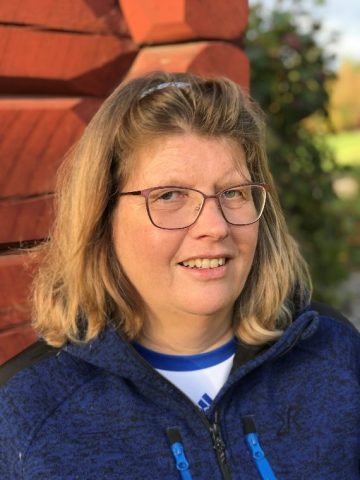A tale of an island – on changing circumstances and the need for adaptive governance

Lena Nerhagen,
PhD in Economics, Researcher and Senior Lecturer,
Högskolan Dalarna,
Sweden
There is one place in the Baltic Sea that is very special to me. It is the island of Tjärö on the coast of Blekinge. 50 years ago, I spent the best summer ever in my childhood there. That summer my mother was the manager of this island tourism lodge. For me and my siblings, it was a summer of lazy days in the sun, mostly spent on “our” cliff where we would dive into the sea and see fish swimming in front of a steep slope covered in rockweed. Rowing boats were the means to get out onto the sea. It was a very quiet place compared to what it is today. One reason for this was the military presence in Blekinge which prevented foreigners from visiting this coast and it islands. This ban lasted until 1997.
Since it is a special place, in 1976 Tjärö was declared a nature reserve. In the summer of 1983, I came back to work, and did so for two summers. There are many memorable encounters from these stays; cows having slipped out of pastures during the night, a badger being trapped in one of the old houses, the captain who had a designated place in the dining room and the fisherman who came to sell a pike almost as long as he himself was tall. More importantly however was getting to know a sailor instructor, Joakim, that was to become associate professor in meteorology and researcher at the Swedish Meteorological and Hydrological Institute. Little did we know then that we were going meet again and work together.
At this point in time, we were not involved in any discussions about problems with algal bloom. It was only in 1980 that the foundation of HELCOM, the Convention on the Protection of the Marine Environment of the Baltic Sea Area, had entered into force. In Sweden, the problem with algal bloom was addressed several years later in the government bill 1988/89:10. According to the 1989 yearbook of the Swedish Society for Nature Conservation, the main polluting sectors to the seas were agriculture and traffic. The latter since the nitrogen emissions from the burning of fossil fuels contribute to the eutrophication. Despite this, looking back I can conclude that the focus in this international work has been on reducing the impact of land-based water borne sources. An example is the list of significant pollution sites around the Baltic Sea established in 1992 – HELCOM Hot Spots. Today 25% of the sites remain on the list.
Over time, shipping has increased and is now said to be: “among the largest sources of airborne NOx ending up in the Baltic Sea, e.g. more important than the combined airborne NOx load from on-land sources in Sweden”. This is an interesting statement since it actually says nothing about if air pollution from shipping is or isn’t an important environmental problem. For many years, after having met Joakim Langner again at a conference, I have had the possibility to do multidisciplinary research with SMHI. The lessons I have learnt is the complexity in modelling air pollution and the importance of assessing the influence from many different sources over larger geographical areas. In one recent study, we estimated the impact of Swedish shipping in the Baltic Sea (Nerhagen, 2016; SMHI, 2016). We compared its impact with that from other emission sources and concluded that emissions from shipping only make a marginal contribution to the total deposition in the area. This conclusion is supported by the results in a study by Geels et al. (2021). Of an estimated total of 9900 premature deaths in 2015 in the Nordic countries, about 850 can be attributed to shipping. Another finding in our study was that, as expected, there is an important geographical variation in the impact from shipping. Since we did not include leisure boating, a potential problem locally due to the emissions being released closer to land, I am pleased to see that this issue has been addressed in more recent research.
Another lesson I have learnt from my work on air pollution is that it can be difficult to influence policy. For me, the tale of this island is the need to develop adaptive governance that accounts for geographical differences and changes over time in complex socio-ecological system. Having followed the development on and around Tjärö for 50 years, it is clear that circumstances change in important ways. Geo-political developments, emissions from distant sources and changes in ownership of the island have all influenced the conditions for its development as a tourism destination. Maybe now the tourism development itself is a cause for concern. I noticed, when returning in 2019 after 35 years, that the island is now a popular destination for leisure boats from near and far. With the Blekinge Archipelago having been designated an UNESCO Biosphere Reserve in 2011, this might be one of the conflicts that needs to be addressed in the future. To solve conflicts, I believe there must be a common understanding of what the problems are. Hopefully, this coast now being a biosphere reserve can contribute to a planning process where researchers and policymakers work together in closer cooperation also involving other concerned parties.
Expert article 3095
> Back to Baltic Rim Economies 5/2021
To receive the Baltic Rim Economies review free of charge, you may register to the mailing list.
The review is published 4-6 times a year.
